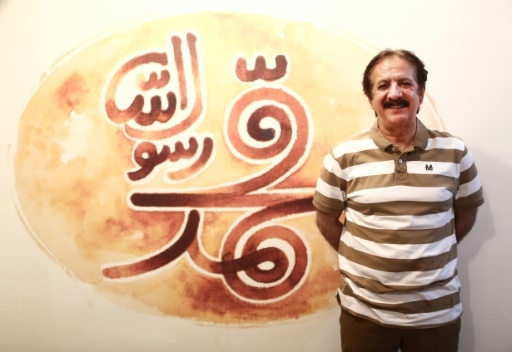
Iran’s most expensive film production, “Muhammad”, is set to open in the last days of August 2015 in 143 theaters across Iran before it opens in Montreal Film Festival. The religious biopic is already under attack by many Muslims who are opposed to any depiction of the prophet.
The $40 million production about the childhood of the prophet came under fire from Sunni Islamic clerics, who claim that it’s forbidden to depict Muhammad, while Shia Muslims don’t appear to mind the movie depiction of the prophet.
The Muslim world’s leading Sunni religious institution in Egypt, al-Azhar, said that portraying the Prophet Muhammad was tantamount to belittling his spiritual status. The organisation opposes not only portraying the prophet’s face but also his voice.
“The actor who plays this role may later play a criminal, and viewers may associate these characters with criminality,” Abdel Dayyem Nosair, adviser to Al-Azhar head Ahmed al-Tayyeb, told AFP.
The movie’s director, Majid Majidi, insisted that the 171-minute film will improve Islam’s “violent image” by giving the right impression of Muhammad’s life.
In an interview with AFP in Tehran, Majidi said extremists and jihadists such as the Islamic State group “have stolen the name of Islam”.
In the Western world, “an incorrect interpretation of Islam has emerged that shows a violent image of Islam, and we believe it has no link whatsoever to the religion”, he said.
In an attempt to allay the concerns of Muslims, Majidi looked for alternative ways of showing the prophet, and chose not to picture his face at all. Instead, the movie depicts Muhammad by only showing the back of his head.
“We customised a steadicam especially for the prophet. Wherever we have the prophet in the film, we see through his POV (point of view), even in his childhood,” Majidi explained.
“Everyone is curious to see the prophet in the film, but you cannot see his face,” he said, adding that the prophet can only be seen in profile, or with his back to the camera.
“To have the hero throughout the movie and not show his face once is a big challenge,” said Majidi, whose “Children of Heaven” was nominated for Best Foreign Language Film at the Academy Awards in 1998.
“Muhammad” is the first part of a trilogy on the life of the prophet. The film depicts events before his birth and up to his teenage years, before he became prophet, which according to the Quran was at the age of 40.
“Definitely, some countries like Saudi Arabia will have problems with this film but many Islamic countries — including Turkey, Indonesia, Malaysia and many others in Southeast Asia — have asked for the film,” Majidi said.
The first major production about the prophet’s life, “Mohammad, Messenger of God” from Syrian-American filmmaker Moustapha Akkad, also drew criticism in the Muslim world when it was released in 1976.
The next two films in the trilogy could prove even more controversial as the young hero is not yet a prophet in the first installment.
“There are no disputes over this period” of the prophet’s life, said Majidi, who has won international prizes including the Oecumenical Special Award in Montreal for promoting unity among religions.
“From the time he becomes a prophet, even dialogue would be very difficult to manage, but I believe it is still achievable,” the director said.




